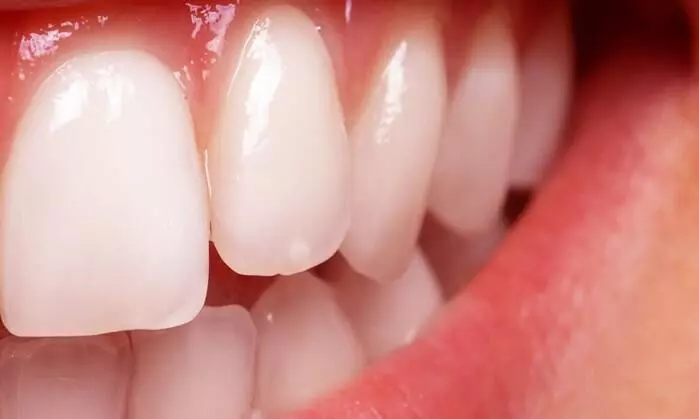Short Fiber-Reinforced Composites may improve fracture resistance in posterior restorations: Study
- byDoctor News Daily Team
- 23 October, 2025
- 0 Comments
- 0 Mins

A recent systematic review published in theJournal of Esthetic and Restorative Dentistryrevealed that short fiber-reinforced composites (SFRCs) may improve fracture resistance and failure patterns in posterior restorations. The existing evidence is limited and of low certainty, therefore their routine clinical use should await confirmation from long-term randomized trials. The review was conducted according to PRISMA 2020 guidelines, which analyzed data from both laboratory (in vitro) and real-world (clinical) studies. Comprehensive searches across 5 major scientific databases and additional gray literature were performed up to July 2025. In total, 28 studies (23 in vitro and 5 clinical trials) met the inclusion criteria all focusing on SFRC-based restorations used in posterior teeth, where chewing forces are highest. This research evaluated the fracture resistance, failure patterns, and overall clinical performance of these innovative materials. The risk of bias in included studies was critically assessed using RoBDEMAT, RoB 2.0, and JBI tools. Due to variability in study designs, materials, and testing methods, a narrative synthesis was adopted instead of a statistical meta-analysis. Stronger Restorations and Repairable Failures In vitro results were consistently positive, where the restorations that incorporated SFRC layers beneath conventional composite surfaces demonstrated notably higher fracture resistance, particularly in large mesio-occluso-distal (MOD) cavities and in endodontically treated teeth, which are more prone to structural weakness. Fracture resistance of SFRC restorations outperformed traditional composites in nearly all test models. Failures in SFRC restorations were often repairable where the cracks were confined and restorations could be fixed without total replacement. The greatest improvements were seen in deep or wide cavities with weakened tooth walls. Short-term trials (up to 4 years) reported satisfactory survival rates and good marginal adaptation, though differences compared with standard composites were not statistically significant. While SFRCs offer a mechanically reinforced solution that mimics the stress-dissipating behavior of dentin, this review emphasizes that clinical evidence remains limited and of low certainty. Current trials are short-term and vary in sample size and methodology. Overall, these findings suggest that SFRCs hold great potential for improving durability and reducing catastrophic failures in posterior restorations. However, routine clinical use should remain cautious until findings are supported by long-term randomized controlled trials. Fernández, E., Díaz, L., Bersezio, C., Martín, J., Cabello, R., & Angel, P. (2025). Efficacy of short fiber-reinforced composite resins in MOD and endodontically treated posterior teeth: A systematic review. Journal of Esthetic and Restorative Dentistry, jerd.70046.https://doi.org/10.1111/jerd.70046
Disclaimer: This website is designed for healthcare professionals and serves solely for informational purposes.
The content provided should not be interpreted as medical advice, diagnosis, treatment recommendations, prescriptions, or endorsements of specific medical practices. It is not a replacement for professional medical consultation or the expertise of a licensed healthcare provider.
Given the ever-evolving nature of medical science, we strive to keep our information accurate and up to date. However, we do not guarantee the completeness or accuracy of the content.
If you come across any inconsistencies, please reach out to us at
admin@doctornewsdaily.com.
We do not support or endorse medical opinions, treatments, or recommendations that contradict the advice of qualified healthcare professionals.
By using this website, you agree to our
Terms of Use,
Privacy Policy, and
Advertisement Policy.
For further details, please review our
Full Disclaimer.
Recent News
BFUHS notifies on round 5 nursing admissions, deta...
- 24 October, 2025
24-year-old Rajasthan MBBS student goes missing in...
- 24 October, 2025
TCT Conference 2025: Here are Top 10 Global Leader...
- 24 October, 2025
Lupin unveils authorized generic version of Ravict...
- 24 October, 2025
Daily Newsletter
Get all the top stories from Blogs to keep track.


0 Comments
Post a comment
No comments yet. Be the first to comment!